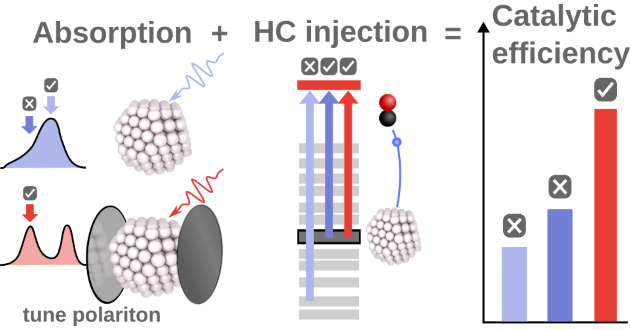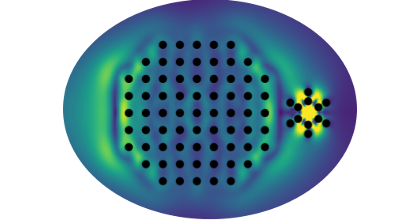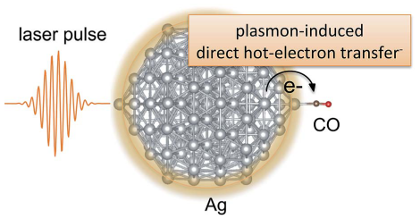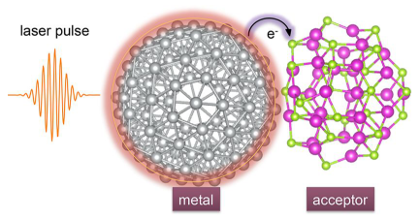Controlling Plasmonic Catalysis via Strong Coupling with Electromagnetic Resonators
J. Fojt,
P. Erhart,
and
C. Schäfer
Nano Letters 24, 11913
(2024)
arXiv:2407.03191
doi: 10.1021/acs.nanolett.4c03153
zenodo: 13357330
(associated data)
Download PDF

Plasmonic excitations decay within femtoseconds, leaving non-thermal (often referred to as “hot”) charge carriers behind that can be injected into molecular structures to trigger chemical reactions that are otherwise out of reach – a process known as plasmonic catalysis. In this Letter, we demonstrate that strong coupling between resonator structures and plasmonic nanoparticles can be used to control the spectral overlap between the plasmonic excitation energy and the charge injection energy into nearby molecules. Our atomistic description couples real-time density-functional theory self-consistently to Maxwell’ s equations via the radiation-reaction potential. Control over the resonator provides then an additional knob for non-intrusively enhancing plasmonic catalysis and dynamically reacting to deterioration of the catalyst – a new facet of modern catalysis.



